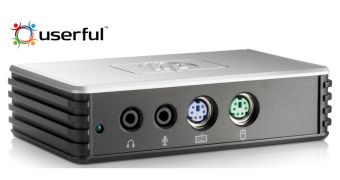The idea of sharing a certain computing system's resources among multiple users can prove to be quite effective in certain specific areas of application (such as the educational segment), and this is exactly what Userful now offers us, with their MultiSeat solution.
The MultiSeat Linux desktop virtualization technology, set to be demonstrated at CeBIT 2011, enables up to 11 users to share the computing power of a single Linux system at the same time, with the help of some USB thin clients or sharing devices, of course.
Without a doubt, while it will prompt organizations to purchase some additional USB devices (some of the best-examples include the HP t100 or the Wyse E01), there are also plenty of benefits in using the solution from Userful.
For example, by requiring a single desktop PC running Linux, instead of 11 machines, the overall hardware costs will be seriously reduced, and the same goes for the infrastructure required to be installed within the location where this system will be installed.
Furthermore, by employing a single system, the amount of power being used during normal operation will certainly decrease as well, the estimated cut backs being set at a value of around 90 percent.
Another very interesting detail worth mentioning here is the fact that end-users won't really be able to tell the difference between the Userful MultiSeat solution and a normal desktop (they'll still be using a single monitor, mouse and keyboard, attached to the USB MultiSeat devices).
As mentioned before, the MultiSeat technology (which has already started to be implemented within educational units in several countries around the world) is built on Linux, and comes as a separate distro users will have to install on their machines.
However, once that's done, they'll be able to easily manage all of the separate systems easily, as well as enjoy a full set of features, similar to any of the other open-source OS' out there.

 14 DAY TRIAL //
14 DAY TRIAL //